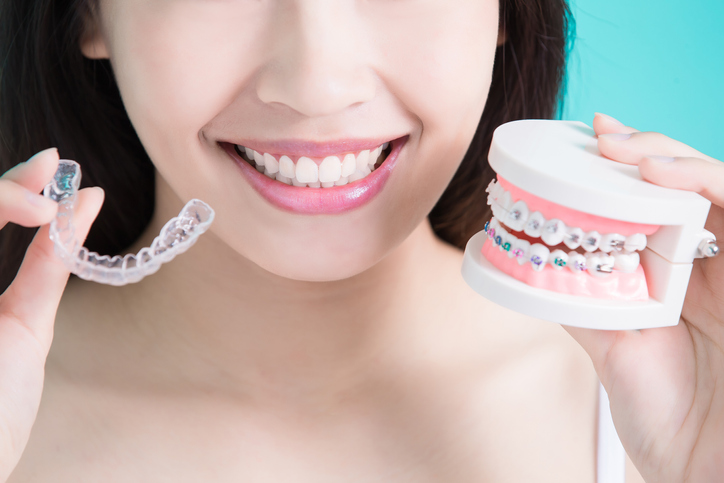
While traditional metal braces may be slightly more affordable than Invisalign, the cost is just one factor to consider when choosing between braces and Invisalign.
Financial cost is often a significant consideration when choosing between braces and Invisalign for straightening teeth. Both orthodontic devices correct crooked teeth and bite irregularities, so either one will give you a perfect smile. But if you are deciding based on price, you will find traditional wire braces are slightly less expensive than Invisalign. However, prices vary based on the type of braces you get, your geographic location, and the severity of the addressed orthodontic issue.
According to Oral-B, metal braces generally cost $3,000 to $7,000. Ceramic braces are usually priced between $4,000 to $8,000, while lingual braces that go behind the teeth can cost anywhere from $8,000 to $10,000. Invisalign usually runs between $4,000 and $7,400. But before you decide on one or the other, you can consider the benefits of each to determine if Invisalign or braces is the smarter choice for your specific needs.
Braces and Invisalign 101
Braces and Invisalign straighten teeth and correct bite issues. However, how each achieves that goal differs slightly. Braces attach wires to each tooth to pull the teeth into alignment. Invisalign, meanwhile, uses a series of clear aligners to shift teeth into position progressively.
For mild to moderate spacing and bite issues, Invisalign is a good choice. Severe bite problems will likely require traditional braces. Your orthodontist can recommend the best option for you.
When considering the length of treatment, keep in mind that it will depend on how much orthodontic correction is needed. Invisalign can work in as little as six months, but the average timeline falls between 12 to 18 months (doctors recommend wearing Invisalign for 20 to 22 hours a day for maximum effectiveness). Braces, however, can take two years or more to straighten teeth fully.
Many adults and teens prefer Invisalign due to its transparent appearance. The clear plastic is virtually undetectable. But removing and inserting the aligners after every meal may be a chore for some people. It’s easy to forget to put them back in after eating. It’s also common to accidentally misplace the trays. With fixed braces, you won’t have that worry. Further, ceramic braces that match the color of your teeth and lingual braces attached to the back of your teeth are less noticeable than traditional wire braces. The choice ultimately comes down to your preferences, lifestyle, and, of course, budget.
Are braces or Invisalign worth it?
Although the upfront cost of Invisalign and braces appears high, your insurance carrier may cover all or part of the cost. You can also dip into your flexible savings account (FSA) or health savings account (HSA) to help fund the treatment. Check with your insurer to see your potential out-of-pocket cost. A dental office, such as Espire, can usually work out an affordable payment plan.
Ultimately, you will achieve straighter teeth with whichever option you choose. Straighter teeth aren’t just for appearance’s sake. When your teeth are correctly aligned, you can brush and floss easier, which reduces harmful bacteria and plaque buildup. In addition to a perfect smile, you’ll have healthier teeth and gums. If your bite problems are causing jaw pain, you’ll find that braces or Invisalign will make chewing and speaking more comfortable. All those factors make braces or Invisalign a worthy investment in your oral health.
Decision time!
Schedule an appointment at Espire’s Oklahoma City location today! Our highly trained dentists will help you decide between Invisalign or braces, as we are experts in both! Don’t live near our Oklahoma City office? Find one of our other locations near you.
Oklahoma City, OK
12448 St Andrews Drive
Oklahoma City, OK 73120
